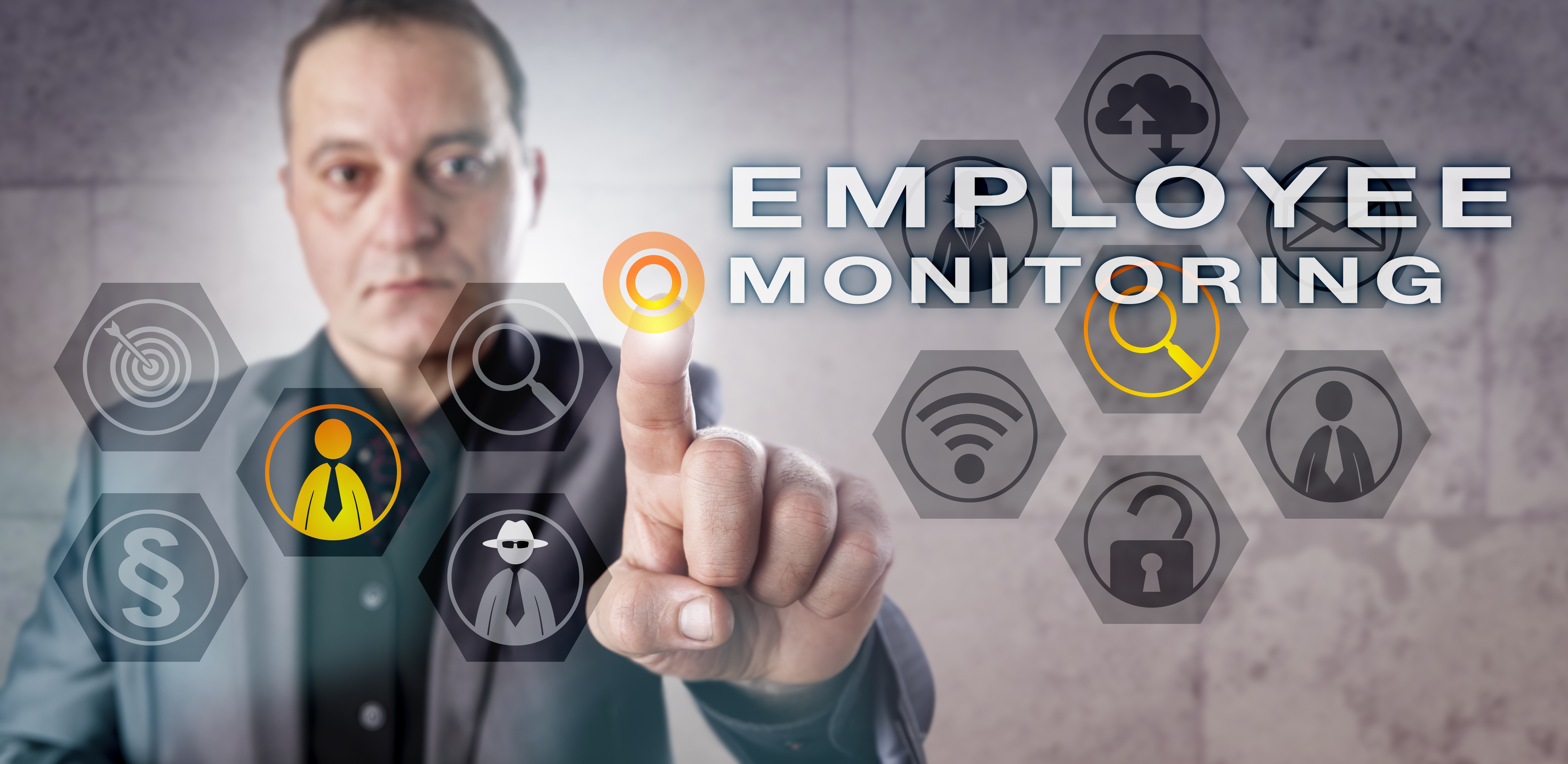Employee Relations | Remote/Hybrid Workforce
I Spy Employee Monitoring in the Workplace | LaborSoft
Read Time 4 mins | Nov 16, 2018 | Written by: Frankie Kourtis

We all know in America that Big Brother is watching, but did you know that Big Business might be too? Keeping an eye and ear on your employees is something that bosses and managers have done since the dawn of business, long before it was easy. In fact, new technologies are being born out of the fearful climate we live and conduct business in every day—whether it be due to concern over employee productivity (or lack thereof), to ensure data integrity, over the looming threat of litigation, or due to government investigations. But, despite big headlines over firings due to behaviors in the workplace being displayed everywhere all the time, many employees remain ignorant that this is taking place—right under their noses.
Don’t Be Left Surprised!
We know that employee monitoring is nothing new. In fact, with the advent of telecommunications and the Internet, companies have been recording conversations and monitoring content for decades. However, many employees are either not remembering since it is not kept top-of-mind after they start a job, or they aren’t noticing that the tasks they perform at work are often being monitored. “Most employees receive policies regarding use of office business tools and privacy issues on the first day of employment, but too often they don’t read them. Employers need to do more than hand over a written policy,” says Manny Avramidis, CEO for the American Management Association (AMA).
Since employee monitoring is virtually unregulated, employers don’t even have to expressly state in their policies that they are monitoring employees. As Melissa Ventrone, a privacy attorney at the law office of Thompson Coburn in Chicago, Illinois, comments, “Generally in the workplace, there isn’t a right to privacy.”
While there are some states—California, Connecticut and Delaware included—that outline statutory rights or require employers to notify employees of being monitored, the majority are not required to do so; it should just be assumed by employees that they are.
What’s Being Monitored?
Assume that any device that you use at work is being monitored—running the gamut from computer and Internet usage, e-mails, text messages, social media and blogs, company-issued mobile devices (cell phones, tablets, etc.), to telephone calls and voicemails, audio and video recordings, and in some cases, even GPS devices in company-issued vehicles and U.S. postal mail. According to the 2007 Electronic Monitoring & Surveillance Survey of 304 U.S. companies conducted by the AMA and The ePolicy Institute, 43% of the surveyed companies admitted to monitoring employee e-mails, 30% of bosses had fired workers due to Internet misuse, and 28% of the employers fired workers due to misusing e-mail. Overall, the survey found that 45% of the employers were tracking content, keystrokes, and time spent at the keyboard, 43% were storing and reviewing computer files, 12% were monitoring the blogosphere to see what was being written about the company, and 10% were monitoring social networking sites.
We understand that the competitive landscape is driving employers to assess employee productivity and strive to ensure data security all the time. However, larger concerns are motivating employers to increase monitoring and put more blocking technologies into practice. “Workers’ e-mails and other electronically stored information create written business records that are the electronic equivalent of DNA evidence,” said Nancy Flynn, executive director of The ePolicy Institute. “To help control the risk of litigation, security breaches and other electronic disasters, employers should take advantage of monitoring and blocking technology to battle people problems—including the accidental and intentional misuse of computer systems and other electronic resources.”
How Far is Too Far?
When it comes to monitoring employees’ every action and move, how far could it go? We all love those portable biometric tracking devices for tracking our fitness and steps like Fitbit and Apple Watch, right? Well, would we like them so much if our employers required us to wear them at work? This is exactly what Amazon is piloting right now in Illinois—the company recently won patents for high-tech wristbands that could be used by its e-commerce warehouse and distribution staffs to track worker hand movements as orders are being filled.
What about implanting microchips under workers’ skin, which would seemingly track employee access to different buildings on company campuses or allow workers to pay seamlessly at the cafeteria? Believe it or not, there are some companies out there toying with this idea right now. Also, have you heard about fingerprint, retina, or iris scanning instead of punching the time clock? While these seem futuristic or the plot of a sci-fi flick, the truth is they are being tried out and considered. Time will tell, but tracking and monitoring at the workplace will continue to grow for years to come.
LaborSoft’s innovative technology is one of many integral solutions that keep your business, in business. Our employee relations analytics, case management workflows, and our central repository of documentation streamlines case management to mitigate risk of operational bottlenecks, costly lawsuits, and legal ramifications stemming from HR issues and complaints. This sensitive data requires that maximum security protocols are in place and that your information is protected at all times.
------------------------------------------------------------------------------------------------------------
Contact us for a customized demonstration and learn how LaborSoft can help you improve communications, build a more collaborative, safe, and supportive workplace, while reducing the likelihood of costly litigation.

